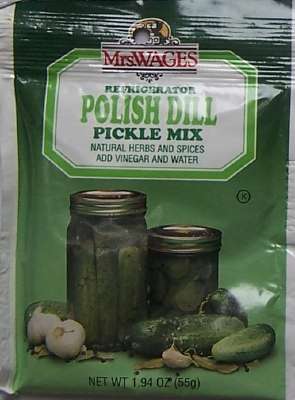
Looking for Peach, Nectarine, Plum, Pluot or Apricot Juice: How to make and bottle your own homemade Peach, Nectarine, Plum, Pluot or Apricot juice (directions, recipe, with photos and free) in 2025? Scroll down this page and follow the links. And if you bring home some fruit or vegetables and want to can, freeze, make jam, salsa or pickles, see this page for simple, reliable, illustrated canning, freezing or preserving directions. There are plenty of other related resources, click on the resources dropdown above. If you are having a hard time finding canning lids, I've used these, and they're a great price & ship in 2 days.
If you have questions or feedback, please let me know! There are affiliate links on this page. Read our disclosure policy to learn more.
Peach, Nectarine, Plum, Pluot or Apricot Juice: How to make and bottle your own homemade Peach, Nectarine, Plum, Pluot or Apricot juice (directions, recipe, with photos and free)
How to Make Homemade Peach, Nectarine, Plum, Pluot or Apricot Juice
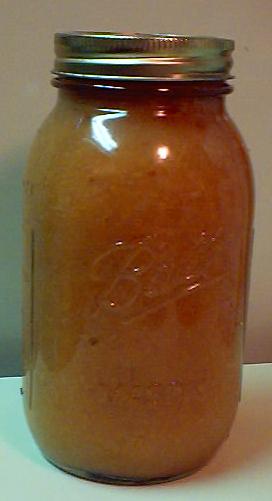 Making
and canning your own peach, nectarine, plum, pluot or apricot juice is
easy. Here's how to make your own home canned fruit juice (some call it
fruit cider, but it isn't fermented, so I don't think that really
applies), complete instructions in easy steps and completely
illustrated. The peach, nectarine, plum, pluot or apricot juice will
taste MUCH better than anything you've ever had from a store, and by
selecting the right peaches, nectarines, plums, pluots or apricots, it
will be so naturally-sweet that you won't need to add any sugar at all.
Making
and canning your own peach, nectarine, plum, pluot or apricot juice is
easy. Here's how to make your own home canned fruit juice (some call it
fruit cider, but it isn't fermented, so I don't think that really
applies), complete instructions in easy steps and completely
illustrated. The peach, nectarine, plum, pluot or apricot juice will
taste MUCH better than anything you've ever had from a store, and by
selecting the right peaches, nectarines, plums, pluots or apricots, it
will be so naturally-sweet that you won't need to add any sugar at all.
Prepared this way, the jars have a shelf life of 18 months to 2 years, and require no special attention.
Directions for Making Peach, Nectarine, Plum, Pluot or Apricot Juice
Ingredients
- Peaches, Nectarines, Plums, Pluots or Apricots (see step 1)
Equipment
- the largest pot you have
- Jar grabber (to pick up the hot jars)
- Lid lifter (I like the lid rack that holds 12 lids or you can pull them out one at a time with the lid-lifter that has a magnet from the almost-boiling water where you sanitize them. ($4 at mall kitchen stores and local "big box" stores, but it's usually cheaper online from our affiliates)t)
- Jar funnel ($4 at mall kitchen stores and local "big box" stores, but it's usually cheaper online from our affiliates)t)
- At least 1 large pot (at least 8-quart size or larger)
- Large spoons and ladles,
- Canning jars (often called Ball jars, Mason jars or Kerr jars) (Publix, Kroger, other grocery stores and some "big box" stores carry them - now about $12 per dozen quart jars (up 50% in 2 years!) including the lids and rings)
- Sieve:
- a simple metal or plastic sieve.
- colander
- Filters - if you want filtered juice
- jelly bag
- cheesecloth
- coffee filters
- 1 water bath canner (a huge pot with a lifting rack to sanitize the jars of peach, nectarine, plum, pluot or apricot juice after filling (about $30 to $35 at mall kitchen stores and local "big box" stores, but it's usually cheaper online from our affiliates) You CAN use a large pot instead, but the canners are deeper, and have a rack top make lifting the jars out easier. If you plan on canning every year, they're worth the investment.
Recipe and Directions
Step 1 - Selecting the peaches, nectarines, plums, pluots or apricots
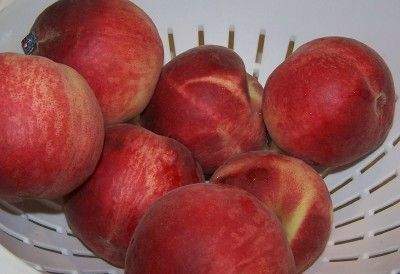 The
most important step! You need peaches, nectarines, plums, pluots or
apricots that are sweet - that will eliminate the need to add any sugar.
You can choose the best peaches, nectarines, plums, pluots or apricots you
can get and make far better peach, nectarine, plum, pluot or apricot
juice. Don't get me wrong, it is fine to use "seconds", as long as
you cut out the bruised spots!
The
most important step! You need peaches, nectarines, plums, pluots or
apricots that are sweet - that will eliminate the need to add any sugar.
You can choose the best peaches, nectarines, plums, pluots or apricots you
can get and make far better peach, nectarine, plum, pluot or apricot
juice. Don't get me wrong, it is fine to use "seconds", as long as
you cut out the bruised spots!
You need fruit that are sweet, and to make the work easier, for peaches, choose cling-free (also called freestone). This means that the peach separates easily from the pit! Same with nectarines, and this doesn't apply to cherries or plums. Don't miss the peach picking tips page!
Choose ripe, mature fruit of ideal quality for eating fresh or cooking. They should not be mushy, but they also should not be rock hard: just as ripe as you would eat them fresh.
Step 2 - How many peaches, nectarines, plums, pluots or apricots and where to get them
You can pick your own, or buy them at the grocery store. But for large quantities, you will find that real* farmer's markets, like the Farmer's Market in Forest Park, Georgia have them at the best prices. In 2012 , they were available from late September at $14 to $30 per bushel. 2013 prices, thanks to abundant rainfall, are likely to be good at the real farmer's markets, like the Atlanta-Forest park Georgia State Farmer's Market and orchards in the southeast of the U.S.
You will get about 12 to 20 quarts of peach, nectarine, plum, pluot or apricot juice per bushel of peaches, nectarines, plums, pluots or apricots. Count on 15 or 16 quarts per bushel.
* - not the cutesy, fake farmer's markets that are just warehouse grocery stores that call themselves farmer's markets.
 Step
3 - Wash the jars and lids
Step
3 - Wash the jars and lids
Now's a good time to get the jars ready, so you won't be rushed later. The dishwasher is fine for the jars; especially if it has a "sanitize" cycle, the water bath processing will sanitize them as well as the contents! If you don't have a dishwasher with a sanitize cycle, you can wash the containers in hot, soapy water and rinse, then sanitize the jars by boiling them 10 minutes, and keep the jars in hot water until they are used. Leave the jars in the dishwasher on "heated dry" until you are ready to use them. Keeping them hot will prevent the jars from breaking when you fill them with the hot peach, nectarine, plum, pluot or apricot juice.
Put the lids into a pan of hot, but not quite boiling water (that's what the manufacturer's recommend) for 10 minutes, and use the magnetic "lid lifter wand" to pull them out.
Step 4 -Wash and chop the peaches, nectarines, plums, pluots or apricots!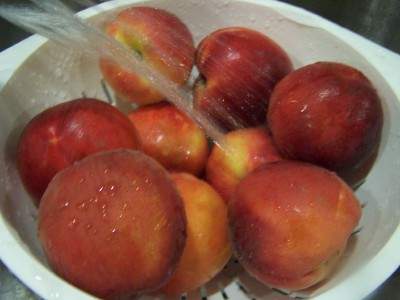
I'm sure you can figure out how to wash the peaches, nectarines, plums, pluots or apricots in plain cold water.
Chopping them is usually pretty easy, just run a sharp knife around them, down to the pit or stone, and pull the halves apart. Unless they are very hard and unripe, you should need to cut them up further.
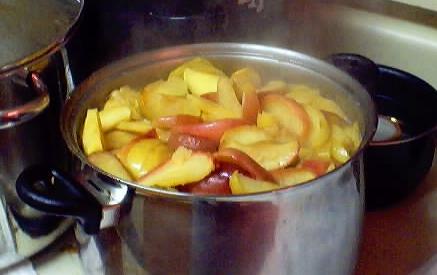 Step
5 - Cook the Peach, Nectarine, Plum, Pluot or Apricots
Step
5 - Cook the Peach, Nectarine, Plum, Pluot or Apricots
Pretty simple put about 4 inches of water (I used filtered tap water) on the bottom of a huge, thick-bottomed pot. Put the lid on, and the heat on high. When it gets really going, turn it to medium high until the peaches, nectarines, plums, pluots or apricots are soft through and through.
Hardware stores sell a fruit steamer. I haven't used one yet, but I hear they work well.
NOTE: If you have a electric juicer, you can simply juice the chopped peaches, nectarines, plums, pluots or apricots, then skip to step 7 to heat the juice to boiling.
Step 6 - Sieve the cooked peaches, nectarines, plums, pluots or apricots
Now you want to separate the liquid from the pulp, skins, seeds, stems, etc. There are quite a variety of ways to filter the peaches, nectarines, plums, pluots or apricots.
Unfiltered juice:
- I like a natural fruit juice, with the natural cloudiness of the fruit particles in it, so I just plop the cooked peaches, nectarines, plums, pluots or apricots into a large metal or plastic sieve or colander. That will remove any large chunks of skins, stems, etc, and will leave a juice that is drinkable, but also natural and high in pulp.
- You can also refrigerate the juice for 24 to 48 hours and then Decant it (without mixing, carefully pour off clear liquid and discard sediment).
Filtered juice:
- If you want filtered juice, just to line your sieve or colander with several layers of cheese cloth and let the juice drip through. It could take an hour..
- If you want really clear fruit juice (but most people prefer "natural" style with some solids) you can strain the juice through a paper coffee filter place inside a sieve or colander.
- If you want more filtered fruit juice, use a jelly bag. Just pour hot prepared fruit pulp into a jelly bag and let it drip. . Do not squeeze the bag.! In my experience this method takes forever.
Note: One of the easiest ways to extract juice is by using a steam juicer available at many hardware and variety stores. If you plan on making a lot of juice or doing this every year, it may be worth buying one. This unique piece of equipment allows you to conveniently extract juice by steaming the fruit which is held in a retaining basket. The juice drops into a reservoir which has a tube outlet for removal. Follow manufacturer's instructions for using steam juicer. See the steam juicers at the right side of this page. All of them get very positive reviews (4 out of 5 stars) from owners online)
Step 7 - Heat the fruit juice
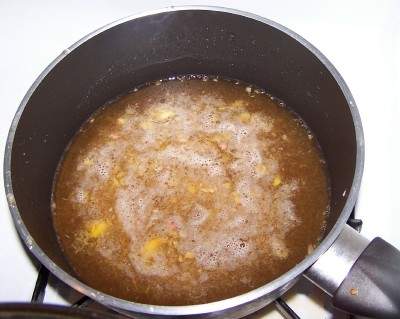
Put the fruit juice into a large pot. If you want, add cinnamon to taste. You should not need to add any sugar.
The fruit juice does not need any further cooking; just get it heated to a low simmering boil and keep it hot until you get enough made to fill the jars you will put into the canner (Canners hold seven jars at once, whether they are quart or pint size)
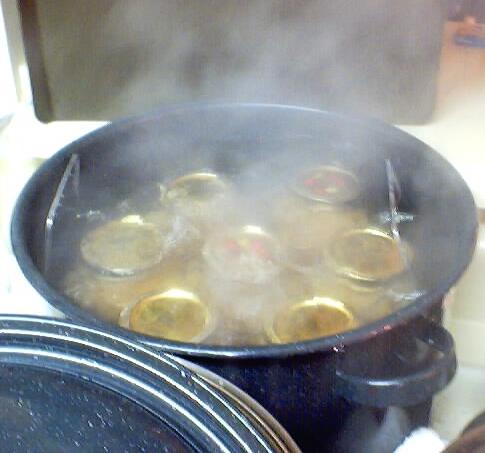 Step
8 - Fill the jars and process them in the water bath
Step
8 - Fill the jars and process them in the water bath
Fill them to within 1/4-inch of the top, wipe any spilled fruit juice of the top, seat the lid and tighten the ring around them. Put them in the canner and keep them cover with at least 1 or 2 inches of water and boiling. if you are at sea level (up to 1,000 ft) boil pint or quart jars for 15 minutes and half gallon jars for 20 min. This assumes you kept the juice hot until you filled the jars. If you are at an altitude of 1,000 feet or more, see the chart below
Recommended process time for
Peach, Nectarine, Plum, Pluot or Apricot Juice in a
boiling-water canner.
Process Time at Altitudes of
Style of Pack
Jar Size
0 - 1,000 ft
1,001 - 6,000 ft
Above 6,000 ft
Hot
Pints or Quarts
15 min
20
25
Half-Gallons
20 min
25
30
Step 9 - Remove and cool the jars - Done
 Lift
the jars out of the water and let them cool without touching or bumping
them in a draft-free place (usually takes overnight) You can then
remove the rings if you like, but if you leave them on, at least loosen
them quite a bit, so they don't rust in place due to trapped moisture.
Once the jars are cool, you can check that they are sealed verifying
that the lid has been sucked down. Just press in the center, gently,
with your finger. If it pops up and down (often making a popping sound),
it is not sealed. If you put the jar in the refrigerator right away, you
can still use it. Some people replace the lid and reprocess the jar,
then that's a bit iffy. If you heat the contents back up, re-jar them
(with a new lid) and the full time in the canner, it's usually ok.
Lift
the jars out of the water and let them cool without touching or bumping
them in a draft-free place (usually takes overnight) You can then
remove the rings if you like, but if you leave them on, at least loosen
them quite a bit, so they don't rust in place due to trapped moisture.
Once the jars are cool, you can check that they are sealed verifying
that the lid has been sucked down. Just press in the center, gently,
with your finger. If it pops up and down (often making a popping sound),
it is not sealed. If you put the jar in the refrigerator right away, you
can still use it. Some people replace the lid and reprocess the jar,
then that's a bit iffy. If you heat the contents back up, re-jar them
(with a new lid) and the full time in the canner, it's usually ok.
FAQs and Tips
- Q. Using a Juicer? "I was reading the fruit juice
canning instructions and was wondering if I can just remove the
pits, then juice the fruits with my electric juicer, then bring
the juice to a boil, and can in a boiling water bath. Seems to me
this would be easier even if the liquid separates after canning
in the jars.
A. Sure! That's perfectly fine!
Comments and Feedback
Other Equipment:
- Jar lifting tongs to pick up hot jars
- Lid lifter - to remove lids from the pot of boiling water (sterilizing )
- Lids- disposable - you may only use them once
- Ring - holds the lids on the jar until after the jars cool - then you remove them, save them and reuse them
- Canning Jar funnel - to fill the jars
|
Granite Ware 21 QT, 9 Piece Enamelware Water bath Canning Pot with Canning kit, Colander and Rack VKP Brands Water Bath AND Steam Canner, 20 Quart Stainless Steel, flat-bottomed Induction range compatible and safe for smooth top ranges. 
|
Home Canning KitsSee the seller's website for more information, features, pricing and user reviews! This is the same type of standard canner that my grandmother used
to make everything from apple juice to jams and jellies to tomato and
spaghetti sauce. This complete kit includes everything you need: the
canner, jar rack, Jar grabber tongs, lid lifting wand, a plastic funnel,
labels, bubble freer, and the bible of canning, the Ball Blue Book. You will never need anything else except more jars and lids! |
| See here for related tools, equipment, supplies on Amazon |
Norpro 1951 Manual Food Strainer, with optional motor; (almost identical to Victorio V250, Villaware and Roma models, all discontinued)
See the seller's website for more information, features, pricing and user reviews! |
| See here for related tools, equipment, supplies on Amazon |
Deluxe Food Strainer and Sauce Maker
With the Deluxe Food Strainer/Sauce Maker, you can make
creamy apple sauce and smooth tomato sauce without
having to peel and core! This multi-use strainer forces
food through a stainless steel screen, automatically
separating the juice and pulp from the seeds, shins, and
stems. Perfect for purees, creamed soups, baby foods,
pie filling, juices, jams, and more. Save time, effort,
and money by preparing your own tasty sauces to be used
immediately or boiled for future use. Do bushels with
ease and in a fraction of the time. Includes the
tomato/apple screen with easy twist on design and
instruction/recipe booklet.
The Deluxe model comes with the standard Tomato/Peach, Nectarine, Plum, Pluot or Apricot Screen; as well as the Berry Screen, Pumpkin Screen, and Grape Spiral. Note
|
Lids, Rings, Jars, mixes, pectin, etc.Need lids, rings and replacement jars? Or pectin to make jam, spaghetti sauce or salsa mix or pickle mixes? Get them all here, and usually at lower prices than your local store! |
Looking for canning equipment and supplies?
Water bath canner with a jar rack
Pressure canners for gas, electric and induction stoves: Presto 23Qt or T-fal 22Qt
Canning scoop (this one is PERFECT)
Ball Blue book (most recent version)
Jars: 8oz canning jars for jams
Find Other types of farms:
Farm markets and roadside stands
Road trips and camping resources
Local Honey, apiaries, beekeepers
Consumer fraud and scams information
Home canning supplies at the best prices on the internet!
Maple Syrup Farms, sugarworks, maple syrup festivals
Environmental information and resources
Farms For Your Event for birthday parties, weddings, receptions, business meetings, retreats, etc.
Festivals - local fruit and vegetable festivals
Get the
most recent version of
the Ball Blue Book
With this Presto 23 quart pressure canner and pressure cooker, you can "can" everything, fruits, vegetables, jams, jellies, salsa, applesauce, pickles, even meats, soups, stews. Model 01781

You can make jams, jellies, can fruit, applesauce, salsa and pickles with water bath canners, like this Granite Ware 12-Piece Canner Kit, Jar Rack, Blancher, Colander and 5 piece Canning Tool Set



